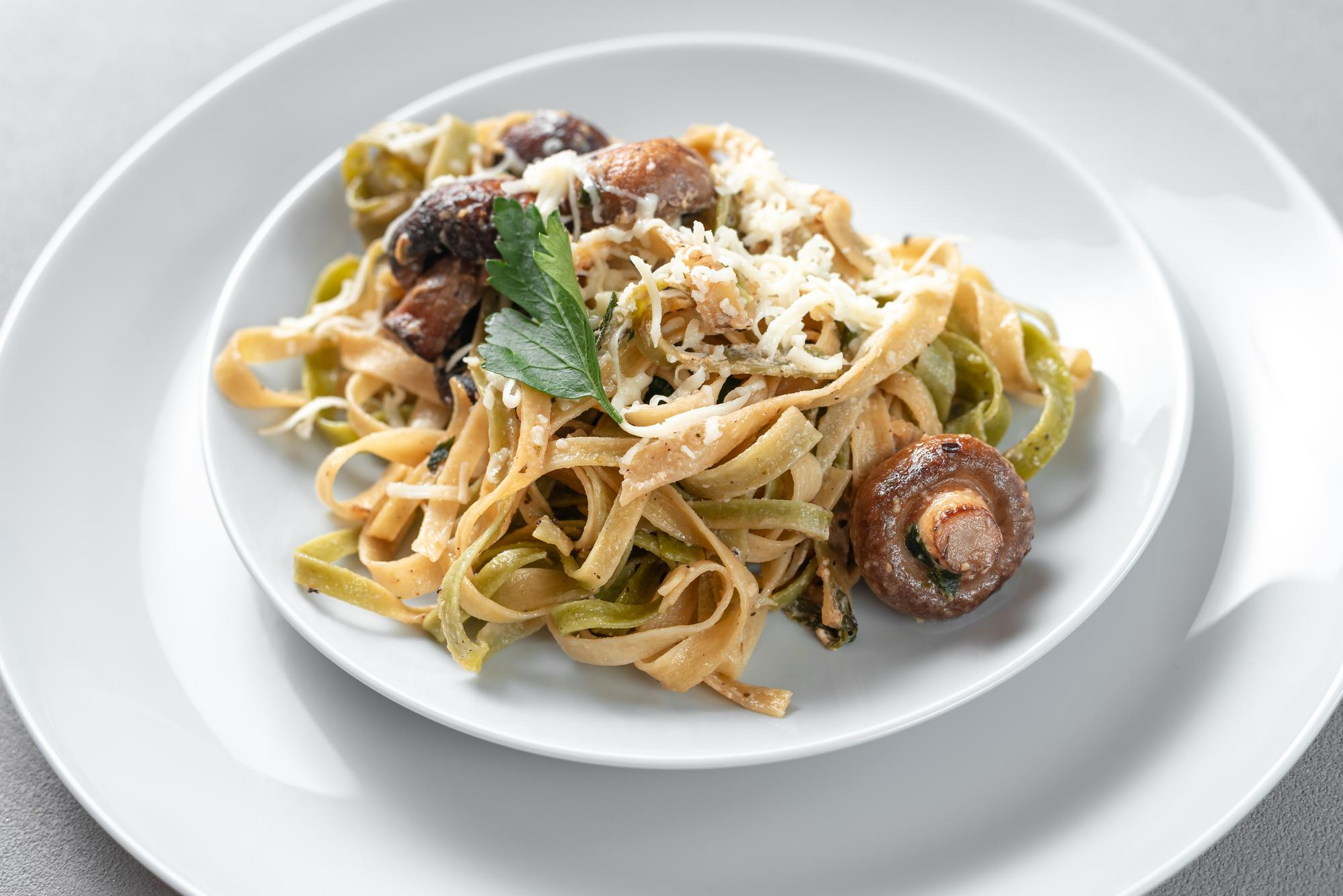This pasta recipe is quite straightforward. You only require a few basic ingredients. It takes very little cooking time, just as long as it takes for a pot of water to boil and cook pasta in it.
For this dish, all you need is spaghetti, a head of garlic, some (good) extra-virgin olive oil, salt, a smidge of honey, a small amount of Parmigiano-Reggiano, and a lime (a lemon is fine).
I also want to point out that this isn’t a conventional Italian pasta recipe before we move on.
This recipe is the result of four and a half years of working from home while preparing daily lunches for my family. On some days, it was leftovers; on other days, it was a more substantial dish, like a bowl of ramen; and on still other days, it was something I created using the ingredients we had on hand, which nearly always included pasta, garlic, olive oil, parmesan cheese, and olives. As a pasta dish made with garlic and olive oil, this would at first glance appear to be just another version of aglio e olio, but it isn’t.
This pasta was inspired by the tiny garlic nubbins in this dish for beef donburi, but it also came from a cupboard that was mostly empty. My justification was straightforward: pasta goes great with garlic, and garlic and pasta go great together, so why not? When I discovered that you could make golden nuggets of garlic with a mesmerizingly soft consistency by tossing them in oil and cooking them very gently for roughly the same amount of time that it takes to bring a pot of water to a boil, add pasta, and cook the pasta to al dente, the concept became even more appealing to me.
I could only see one potential drawback: this concept might turn out to be utterly unoriginal. Yes, golden garlic nubs are excellent, but in that beef rice bowl, where they are served with seared ribeye, with its mouth watering fat, savoury sake, mirin, and soy sauce sauce, as well as a generous amount of the best starch—beautiful white rice—they are very delicious. None of those mouthwatering ingredients were included in my pasta plan.
It’s great because you can add a lot of garlic flavour to some extra-virgin olive oil and then quickly and evenly distribute that oil through water using some of the starch that is released by the pasta as it cooks and vigorous tossing and turning to create an emulsion. The melted Parmigiano cheese lends a helping hand to the emulsion at the very end, making it creamier, saltier, and tangier. It also adheres to each strand of spaghetti quite tenaciously without being heavy or cloying. While a little lime juice brightens it up a little, a little honey balances out the preparation’s saltiness. Put the pasta in a spiral shape on a plate, take the garlic nubbins, and arrange them on top like you would a few pieces of crisped pancetta or guanciale on a different, better pasta. Finally, top the mound of cheese with a little more cheese.
Ingredients
- One head of garlic cloves, peeled and kept whole if small
- 1/4 cup plus 1 tablespoon (74ml) extra-virgin olive oil
- 1 tablespoon plus 1 teaspoon salt
- 1/2 pound (225g) spaghetti
- 1/2 teaspoon honey
- 57g Parmigiano Reggiano, grated, plus more for serving
- 10ml lime juice
- 1 lime, halved, for serving
Directions
- 3 quarts of cold water should be used to fill a 3-quart saucier. Add salt, and then heat the mixture to a boil.
- Olive oil and garlic cloves should be combined in a pasta pan or wok and heated over low heat while the water is heating. For about 15 minutes, cook the garlic, turning occasionally, until the cloves are meltingly soft.
- Add spaghetti to now-boiling water and cook until just al dente, about 1 to 2 minutes less than package instructions.
- When garlic just begins to turn brown in colour and pasta is cooking, add honey to the pan and stir to combine. Turn up the heat to medium-high, and cook, stirring constantly, for about 2 minutes, or until the garlic cloves just begin to faintly brown in areas. Turn up the heat to high, add 1/2 cup of pasta water, and bring to a boil.
- Put cooked pasta in the pan with the garlic sauce. Sauce will become creamy and emulsified after around 2-3 minutes of cooking while you constantly mix and toss. When the pasta appears to be starting to fry and the pan appears to be getting greasy, add pasta water from the pasta pot, 1/4 cup at a time, and cook, tossing and swirling the pasta constantly, until the sauce is emulsified.
- Add cheese once the heat has been turned off. Pasta should be tossed and stirred until cheese has completely melted into the sauce. Mix in lime juice after adding it. Add salt to taste. Serve immediately with additional grated cheese and halved limes on the side.
